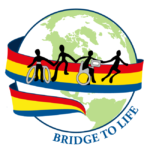Children With Cortical Visual Impairment and Complex Communication Needs: Identifying Gaps Between Needs and Current Practice

Blackstone, SW, Luo, F, Canchola, J, Wilkinson, KM & Roman-Lantzy, C. (2021). Children with cortical visual impairment and complex communication needs: Identifying gaps between needs and current practice. Language, Speech, and Hearing Services in School. 52, 612-629.
https://doi.org/10.1044/2020_LSHSS-20-00088.
Conducted by The Bridge School Research Program with partial funding from Ability Central Philanthropy.
Purpose: To establish a baseline for how well the needs of children with cortical visual impairment (CVI) who use augmentative and alternative communication (AAC) are currently aligned with the services available to them. Our overarching goals were to identify barriers and suggest priorities for improving outcomes for these children.
Results: School-based professionals identified many barriers, including a lack of knowledge and skills about CVI and AAC, limited access to training and experts, and concerns about services being delivered in isolated silos with limited time allotted for interprofessional collaboration and planning. Parents reported that their children (mean age of 11 years) continued to rely predominantly on body-based forms of communication and lacked access to symbolic language, which, in AAC, is primarily visually based.
Working with children with cortical visual impairment who use augmentative and alternative communication: implications for improving current practice

Luo, F, Blackstone, SW, Canchola, J. & Roman-Lantzy, C. (2022). Working with children with cortical visual impairment who use augmentative and alternative communication: Implications for improving current practice. Augmentative and Alternative Communication, 38:2, 91-105. https://doi.org/10.1080/07434618.2022.2085622
Conducted by The Bridge School Research Program with partial funding from Ability Central Philanthropy
Purpose. To provide further analysis of survey data. Describe challenges faced by US professionals from multiple disciplines when delivering services to children with CVI who use AAC.
Results. Data suggests that current service delivery models may not be meeting the needs of children with CVI who use AAC and/or the needs of professionals from multiple disciplines. Professionals in community-based settings appear to encounter more barriers than those in school-based settings.
Creating a Path for Systematic Investigation of Children With Cortical Visual Impairment Who Use Augmentative and Alternative Communication

Boster, JB, McCarthy, J, Brown, K, Spitzley, AM, Blackstone, SW. (2021). Creating a path for systematic investigation of children with cortical visual impairment who use augmentative and alternative communication. (2021). American Journal of Speech Language Pathology, 14:30(4), 1880-1893.
https://pubmed.ncbi.nlm.nih.gov/34081538
Conducted by Nationwide Children’s Hospital, Columbus; Ohio University, Athens, The Bridge School Research Program.
Purpose: To complete a scoping study to investigate current information in the literature about how to support children with cortical visual impairment (CVI) who require augmentative and alternative communication (AAC), this initial review was designed to explore the available evidence and outline critical needs in moving research and intervention forward for children who use AAC and have CVI.
Results: Overall, the studies found in the literature represented explorations in the area rather than systematic lines of inquiry. Evidence showed at least some children with CVI have been included in AAC research to date, although the inclusion is more incidental than deliberate. Undocumented issues, such as clear descriptions of the vision capabilities and needs of participants, may have impacted study results.


